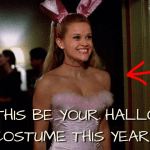What Should You Look For on Your Next Thrift Visit?
Are you a thrift store enthusiast? Do you love the thrill of finding hidden gems at bargain prices? If so, then this quiz is perfect for you!
Our quiz, "What Should You Look For on Your Next Thrift Visit?" will help you identify the items that you should be on the lookout for during your next thrift store visit. Whether you're a seasoned thrift shopper or a newbie, this quiz will provide you with valuable insights and tips on how to make the most out of your thrift store experience.
Thrift stores are a treasure trove of unique and affordable items, but it can be overwhelming to navigate through the cluttered racks and shelves. With this quiz, you'll learn how to spot the best deals and the most valuable items that you can add to your collection or resell for a profit.
So, are you ready to put your thrift store knowledge to the test? Take our quiz now and discover what you should be looking for on your next thrift visit!
What items should I prioritize when thrift shopping?
When visiting a thrift store, it's important to have a game plan. Start by prioritizing the items you're looking for. If you're in need of clothing, focus on the racks and shelves that hold your preferred sizes and styles. If you're searching for home decor, head straight to the furniture and housewares sections. By prioritizing your search, you'll save time and energy while thrift shopping.
2.How can I tell if an item is in good condition?
Thrift stores are known for their unique finds, but it's important to inspect items before purchasing them. Check for any signs of wear and tear, such as holes, stains, or missing buttons. Test electronics and appliances to ensure they're in working order. Don't be afraid to ask a store employee for assistance or clarification on an item's condition.
3.What should I keep in mind when shopping for vintage items?
Thrift stores are a great place to find vintage and retro items, but it's important to keep a few things in mind. First, be aware of the era you're interested in and research the styles and trends of that time period. Second, inspect vintage items carefully for any damage or signs of aging. Finally, be prepared to pay a higher price for authentic vintage pieces, as they are often in high demand.





